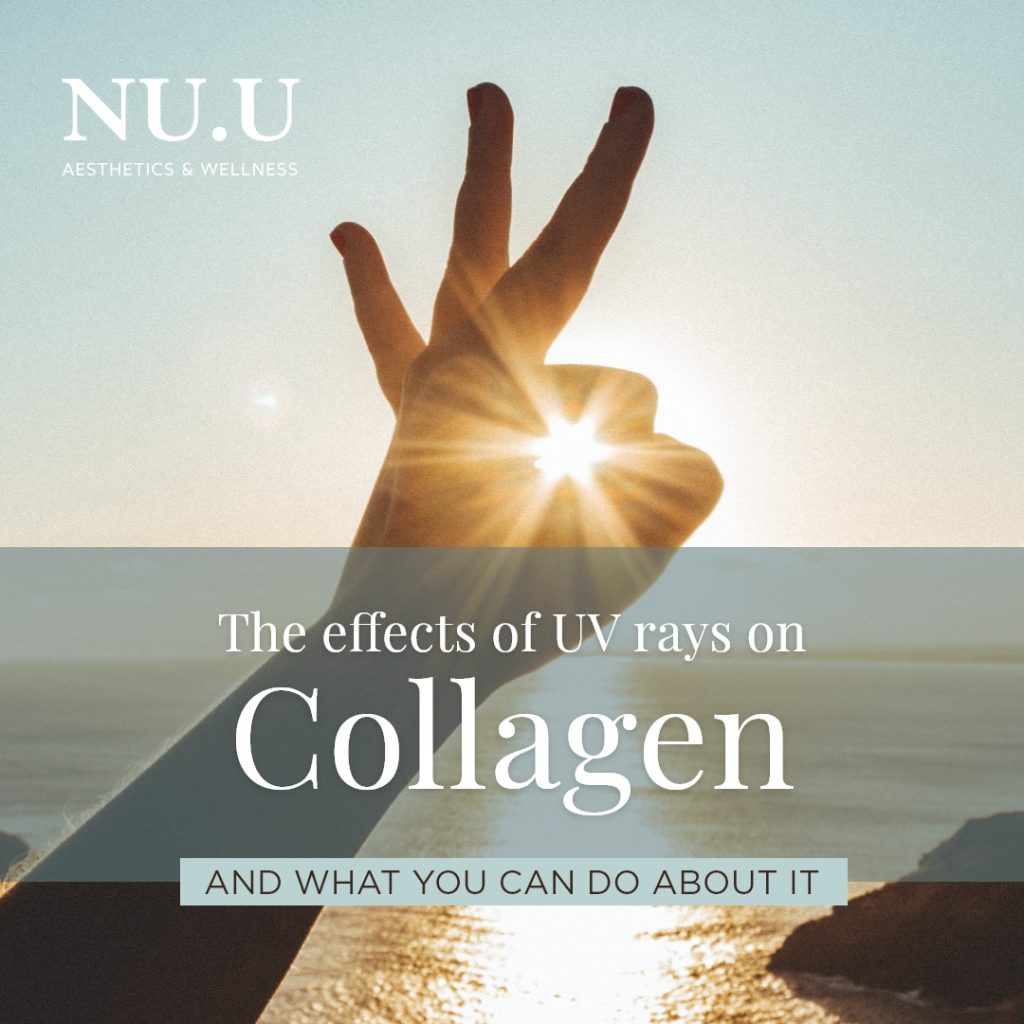Summary
Excessive sun exposure, especially to UV rays, contributes to skin damage and premature aging. UVB causes sunburns, while UVA penetrates deeper, accelerating collagen breakdown. Collagen loss leads to wrinkles and sagging. Sunscreen with SPF50 and PA+++ defends against UV rays, vital even indoors.
UVA penetrates glass, and blue light from devices harms the skin. Reapply sunscreen every 2 hours. Collagen loss, inevitable with age, can be addressed through treatments like Morpheus8 and Sculptra, showing initial results in 4-12 weeks. Results are not permanent, lasting up to a year or more. For collagen treatment options, contact 65-6732 9989 or WhatsApp 65-9152 3582.

Effects of Sunlight on Skin
We have read much about the effects of sunlight on the skin that can result in conditions such as premature aging, skin cancer, and a host of other skin-related conditions.
The sun’s emission of ultraviolet (UV) light accounts for around 90% of all symptoms of skin conditions. Here are some quick facts about UV radiation.
- UVB radiation (290 to 320 nm) affects the outermost layer of skin (epidermis) and is the primary cause of sunburns. It is most intense between the hours of 10AM and 2PM. when the sunlight is at its brightest. It is also more intense during the summer months, accounting for around 70 percent of a person’s yearly UVB exposure. Because of is wavelength, UVB does not penetrate glass easily.
UVA radiation (320 to 400 nm), by contrast, was once thought to have only a minor effect on the skin. Studies have since shown that UVA is a major contributor to skin damage. UVA penetrates deeper into the skin with an intensity that doesn’t fluctuate as much UVB. And, unlike UVB, UVA is not filtered by glass.
Damaging effects of UV rays
Collagen is an essential protein in the skin, central to the building blocks of healthy-looking skin (along with hyaluronic acid and elastin). Its key function is to give our skin strength and elasticity. Over exposure to UV rays degrades collagen, accelerating the breakdown of this essential protein at a higher rate than normal ageing.
The UV rays does this by penetrating the middle layer of skin (dermis), causing the abnormal build-up of elastin.
When elastins accumulate, enzymes are produced which inadvertently break down collagen and create so-called “solar scars.” Continued exposure only speeds the process, leading to further wrinkling and sagging.
DNA damage from UV rays happen in a matter of seconds. In fact, a published study discovered that the damage from that short exposure can last for hours after the instantaneous reaction.
Unprotected exposure to UV rays also generates free radicals in your skin. Free radicals are unstable molecules that disrupt healthy cells, causing a chain reaction of cell damage.
Protect your skin
The sun is harshest between 10AM to 2PM. If you must be outdoors during this time, use an umbrella or wear a wide-brimmed hat. Layer your UV protection with sunscreen that contains at least SPF50 and PA+++ rating. SPF measures the protection against UVB rays, while the PA value stands for UVA defence.
Apply your sunscreen at least 15 minutes prior leaving the house. That’s how long it takes for your skin to absorb the sunscreen and be protected from UV rays. Reapply your sunscreen every two hours for continuous protection against UV rays.
Should I wear sunscreen indoors?
Yes, you should. The sun’s rays can take a toll on your skin. In the short-term, that can mean contending with a scorching sunburn. But, there can also be long-term consequences lurking within the skin, even if you don’t experience a burn. The sun prematurely ages the skin. Called photoaging, this can lead to skin cancer.
- Wrinkling
- Pigmentation changes such as age spots, liver spots (solar lentigines) and freckles
- Loss of skin tone (decreased elasticity)
- Rough, uneven skin texture
- Broken capillaries (spider veins), usually around the nose and chest
- Redness and blotchiness
It is important to know that the glass used typically in cars , homes and office windows is only effective in blocking out most of the UVB rays but does not offer protection from most UVA rays.
UVA rays are known to cause skin cell aging and to be the cause of wrinkles , sunspots and other signs of aging associated with the breakdown of collagen and elastin.
Can loss of collagen be restored?
Collagen levels decrease due to ageing and exposure to UV rays. Unfortunately, there’s no way to totally prevent loss of collagen. The good news is that there are effective medical aesthetic treatments that can rebuild or restore collagen. From microneedling treatments such as Morpheus8 to injectable bio-stimulator made of poly-L-lactic (PLLA) such as Sculptra.
Initial results from collagen restoration treatments are usually visible immediately. However, new collagen growth can take anywhere from 4 to 12 weeks to complete.
Keep in mind that while certain procedures can be very effective at restoring and replacing collagen, these results aren’t permanent. Depending on the collagen rebuilding procedure and areas treated, results can last a year or longer.
If you are looking for treatment options to rebuild and restore collagen, come have a chat with us. Call 65-6732 9989 or WhatsApp 65-9152 3582.
……
References:
Your journey to looking and feeling good starts here. Learn more about how this treatment can help you unlock the restoration and rejuvenation you need for your face and skin. Contact us to make an appointment.
